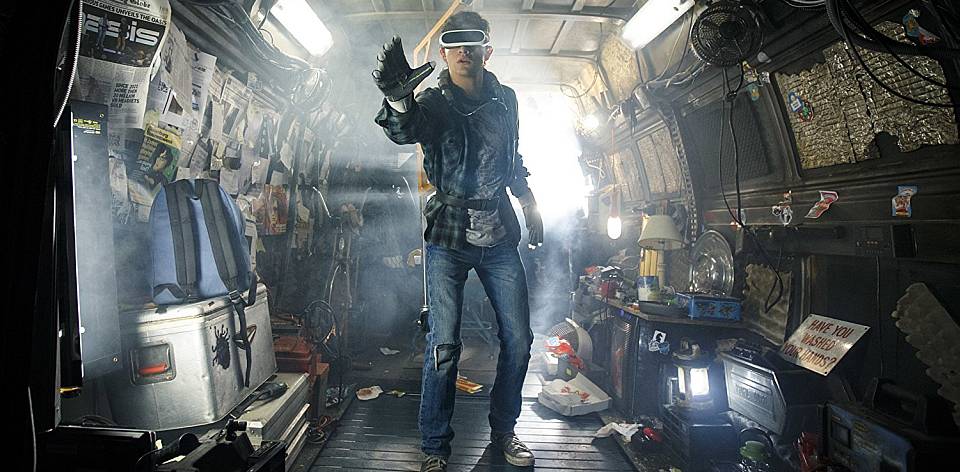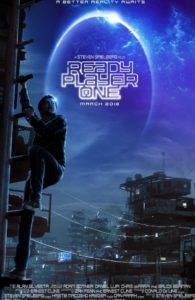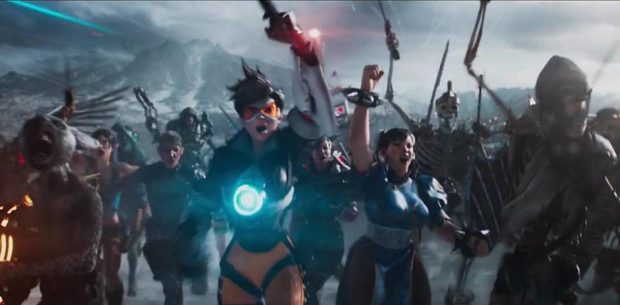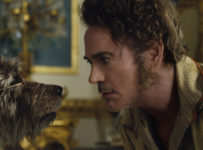Ernest Cline’s Ready Player One has received many accolades in the seven years since its publication. A meta-commentary on the social web and the burdens of relentless fandom, there were also times when it felt like what we imagine a sentient version of Reddit would be. This highly-anticipated adaptation replicates the latter, but also robs the pop-culture explosion of its strongest narrative pieces.
Following the same basic set-up as the novel, Zak Penn and Cline’s screenplay introduces us to the overpopulated Earth of 2045. The virtual reality world of the OASIS is the only escape. For the impoverished Wade Watts (Tye Sheridan), he is given a shot at a fortune when game creator James Halliday (Mark Rylance) dies. The tech trillionaire has left his estate to whoever finds an Easter Egg located inside the pop culture-filled OASIS, sparking a worldwide hunt from true believers and fortune hunters alike. Opposing him is the corporate entity known as IOI, led by CEO Nolan Sorrento (Ben Mendelsohn).
There’s always been a essential contradiction in READY PLAYER ONE, both in the original novel and in this adaptation. In order to get all of the pop-cultural references, you have to have devoted at least some of your time to media consumption. Yet Cline’s tale can also be read as a warning on the excesses of fandom’s entitlement. He presents a dangerous world in which instant gratification, via interactive fan-fiction and self-created utopias, has resulted in humanity’s arrested development. Penn and Cline’s script has a throwaway line acknowledging this when Wade spits out that “a fanboy knows a hater.”
Yet gone are the deus ex machina moments, where Wade’s avatar Parzival would suddenly realise the answer was in an obscure manual from a 1983 video game. In print, these moments served as a barrier to people not ‘in the know.’ Yet the screenplay goes to the other extreme, removing the puzzle-quest element in lieu of cosplaying free-for-alls. The opening ‘quest’ is simply a race between famous film cars where the solution (spoilers, sweetie) is to simply drive backwards.
This kind of plotting permeates the entire world of the OASIS, making this the kind of film made for button mashers rather than adventure gamers. Taking loose bits of storyline from the book, what we are left with is a potpourri of references, from Minecraft World to the Zemeckis Cube. These references are in a constant intergenerational tug-of-war with each other, and an extended sequence in which the players must reenact The Shining makes you wonder who the intended audience actually is.
Spielberg’s involvement in READY PLAYER ONE makes a certain amount of sense. The reverence that Cline has his contemporaries give to the 1980s is built on a number of IPs that the “visionary filmmaker” was directly involved with. Despite this, Spielberg has wisely restrained references to his own work to a DeLorean, while a few phrases from Alan Silvestri’s Back to the Future score pepper the composer’s latest soundtrack. When the film is at its strongest, Spielberg is on more comfortable ground of live-action fantasy.
The rest of the film is a literal melee of characters and icons from the media landscape, built around massive special effects set-pieces. Which would be fine if the SFX were consistently mind-blowing, as they are during the amazing opening and closing sequences. At other times, it looks like a late-90s cartoon version of what ‘computers’ can do. So in a way, READY PLAYER ONE does ultimately warn us of the dangers of excessive pandering, but perhaps not in the way it intended.
[stextbox id=”grey” bgcolor=”F2F2F2″ mleft=”5″ mright=”5″ image=”null”]2018 | US | DIRECTORS: Steven Spielberg | WRITERS: Zak Penn, Ernest Cline | CAST: Tye Sheridan, Olivia Cooke, Ben Mendelsohn, T.J. Miller, Simon Pegg, Mark Rylance | DISTRIBUTOR: Roadshow Films (AUS) | RUNNING TIME: 140 minutes | RELEASE DATE: 29 March 2018 (AUS) [/stextbox]






